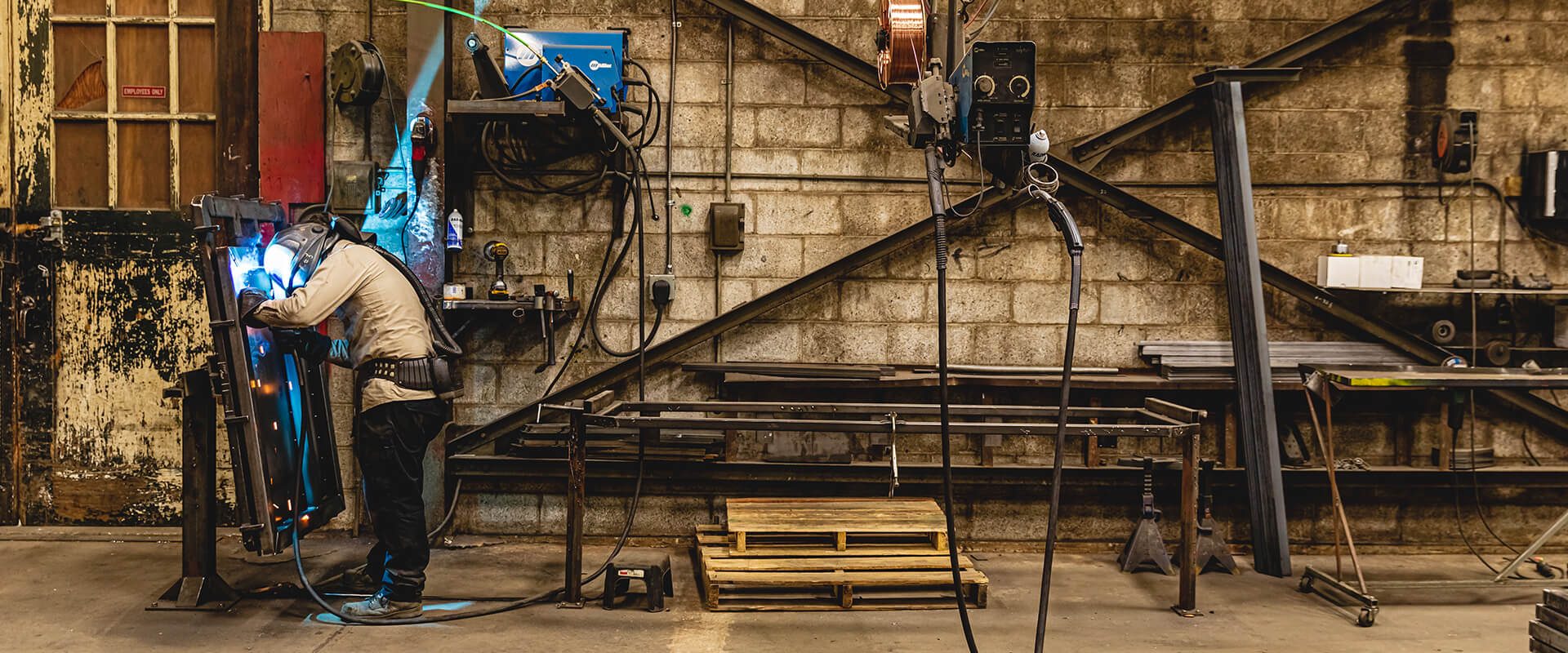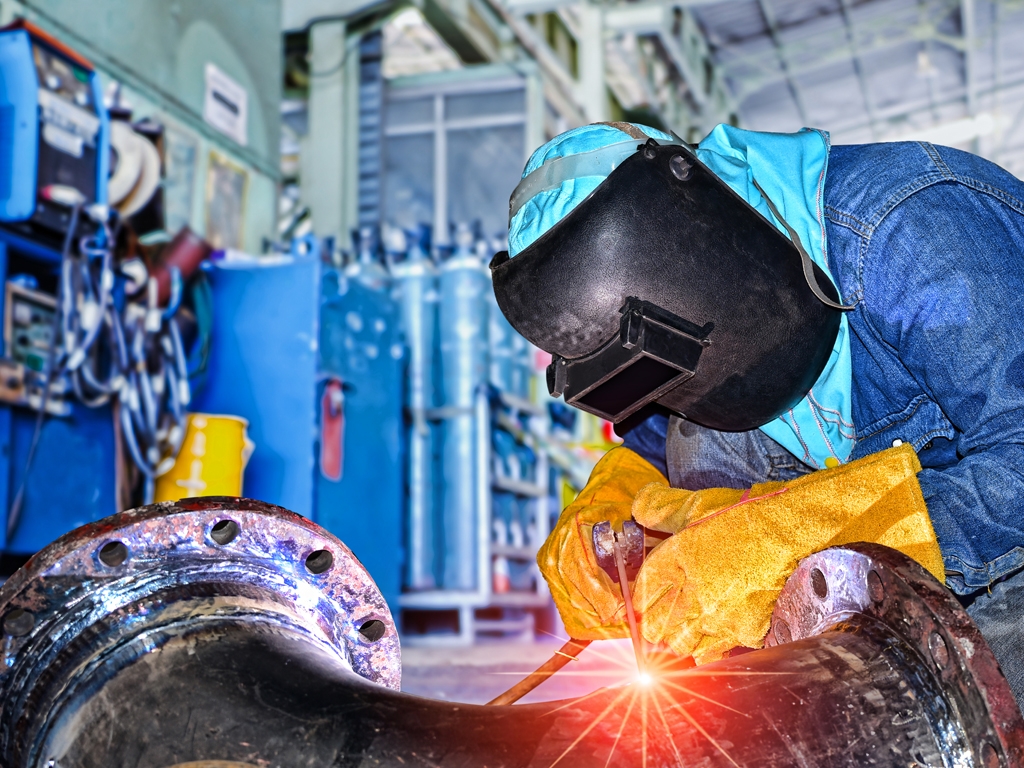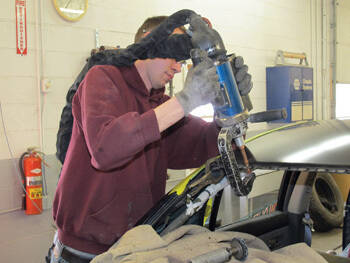Usual Welding Fixing Issues and Just How to Address Them Effectively
Welding repairs commonly run into a series of concerns that can jeopardize the honesty of the end product. Usual problems include poor penetration, porosity, and imbalance, among others. Each flaw presents special difficulties that need particular strategies for resolution. Comprehending these issues is necessary for welders aiming to enhance their abilities and end results. This discussion will certainly explore these usual welding repair problems and reliable approaches to address them.
Inadequate Penetration
Inadequate infiltration occurs when the weld steel falls short to completely fuse with the base product, causing weak joints and prospective structural failings. This concern frequently originates from not enough warmth input, wrong electrode angle, or incorrect welding rate. Welders may experience poor infiltration as a result of a miscalculation of the needed criteria for a specific product density or kind. Furthermore, contamination on the base material's surface can impede reliable bonding, aggravating the issue. To address insufficient infiltration, welders should guarantee suitable setups on their tools and keep a tidy job surface area. Regular evaluation of welds is recommended to recognize any kind of deficiencies early, enabling for prompt modifications and the avoidance of jeopardized structural stability in bonded assemblies.
Porosity
Porosity is a typical flaw in welded joints that manifests as small gas bubbles trapped within the weld metal. This issue can endanger the integrity of the weld, leading to lowered stamina and possible failure under stress. Belgrade Welding. Porosity commonly emerges from contamination, dampness, or inappropriate welding methods, which enable gases to escape into the molten weld swimming pool. To address porosity, welders ought to guarantee correct surface area preparation, maintain a clean workplace, and use ideal welding specifications. Furthermore, choosing the best filler product and shielding gas can alleviate gas entrapment. Regular inspection and screening of welds can assist recognize porosity early, assuring timely corrective actions are taken, thereby protecting the high quality and dependability of the bonded structure
Misalignment
Misalignment in welding can develop from numerous variables, including inappropriate arrangement and thermal expansion. Recognizing the source is crucial for efficient resolution. A number of adjustment strategies are available to realign parts and guarantee architectural stability.
Reasons of Imbalance
Welding imbalance frequently stems from a selection of underlying problems that can endanger architectural stability. One main reason is incorrect fit-up of elements before welding, which can result in voids and irregular surfaces. Variations in thermal growth throughout the welding procedure can additionally lead to distortion, especially if the materials being joined have different coefficients of expansion. In addition, insufficient securing and fixturing might fall short to hold components securely in position, bring about movement throughout welding. Poorly maintained equipment, consisting of welding devices and devices, may present incongruities in the weld grain, further adding to misalignment. Operator error, stemming from not enough training or experience, can additionally play a substantial role in developing misaligned welds.

Improvement Techniques Readily Available
Attending to imbalance effectively calls for a combination of rehabilitative techniques tailored to the specific problems at hand. One common method is using components or jigs to hold parts in the proper placement during welding, ensuring constant placement. Additionally, preheating the products can assist minimize distortion and improve fit-up. For significant misalignment, mechanical realignment techniques, such as utilizing hydraulic jacks or clamps, can be used to fix the setting before welding. Post-weld heat treatment might also be required to relieve tensions created by imbalance. Mindful assessment and modification throughout the configuration phase can stop imbalance problems from ending up being significant issues, advertising a smoother welding procedure and boosting overall architectural stability.
Distortion
Distortion is a common obstacle in welding that can arise from numerous factors, including uneven heating and air conditioning. Recognizing the sources of distortion is crucial for carrying out reliable avoidance methods. Addressing this problem not just improves architectural honesty but likewise improves the total high quality of the weld.
Root causes of Distortion
When subjected to the extreme warmth of welding, materials frequently go through adjustments that can bring about distortion. This phenomenon largely emerges from thermal expansion and tightening during the welding process. As the weld location warms up, the material broadens; upon cooling, it acquires, which can develop inner stresses. On top of that, unequal home heating throughout a work surface can aggravate these stresses, leading to warping or bending. The kind of material also plays a substantial role; steels with differing thermal conductivity and coefficients of expansion may react differently, causing uncertain distortions. In addition, bad joint design and inadequate fixturing can add to misalignment during welding, enhancing the likelihood of distortion. Recognizing these reasons is important for efficient welding repair service and prevention techniques.
Prevention Techniques
Effective avoidance methods for distortion during welding emphasis on regulating warm input and ensuring proper joint style. Keeping a consistent heat input assists to minimize thermal development and contraction, which can lead to distortion. Utilizing strategies such as preheating the work surface can also minimize the temperature level slope, promoting uniform heating. Furthermore, selecting proper joint layouts, such as T-joints or lap joints, can boost security and minimize anxiety focus. Applying proper fixturing to safeguard the work surfaces in area further aids in preserving placement during the welding process. Staggered welding series can disperse warmth more equally, preventing local distortion. By using these approaches, welders can greatly lower the likelihood of distortion and enhance the general quality of their welds.
Splitting
Cracking is an usual concern encountered in welding repair work, typically arising from numerous aspects such this website as incorrect air conditioning rates, product selection, or insufficient joint preparation. The incident of fractures can considerably compromise the honesty of the weld, leading to potential failings throughout procedure. To resolve this problem, welders should initially examine the source, making certain that materials are compatible and suitably selected for the specific application. Furthermore, controlling the cooling rate during the welding procedure is crucial; rapid air conditioning can generate tension and lead to cracking. Proper joint layout and preparation likewise add to decreasing the threat. Applying these techniques can boost weld high quality and sturdiness, ultimately decreasing the chance of fracturing in finished weldments.

Insufficient Blend
A significant concern in welding fixings is incomplete blend, which occurs when the weld metal does not effectively bond with the base material or previous weld passes - Montana Mobile Welding and Repair Belgrade. This defect can lead to weak points in the joint, potentially compromising the stability of the bonded structure. Variables contributing to incomplete combination consist of not enough warmth input, inappropriate welding technique, and contamination of the surfaces being signed up with. To address this problem efficiently, welders should guarantee appropriate pre-weld cleansing and surface area preparation, along with readjust their welding parameters to attain appropriate penetration and combination. Routine examination during the welding procedure can likewise help determine insufficient blend early, allowing for prompt rehabilitative steps to boost the overall quality of the weld
Overheating
While welding repair services can improve structural honesty, overheating offers a considerable difficulty that can result in material destruction. Too much warmth during welding can change the mechanical residential or commercial properties of steels, causing lowered strength, boosted brittleness, and bending. This sensation is especially important in high-stress applications where structural dependability is extremely important. Identifying overheating can entail visual evaluations for discoloration or distortion, along with monitoring temperature level throughout the welding process. To reduce the threats related to overheating, welders need to use proper methods, such look at these guys as managing warm input, readjusting travel rate, and using suitable filler products. In addition, carrying out pre- and post-weld warm therapies can aid recover material homes and boost the total top quality of the repair service, guaranteeing long-lasting efficiency and safety.
Regularly Asked Questions
What Are the Common Indicators of a Welding Problem?

Exactly How Can I Examine My Welds for High quality?
To check welds for quality, one can use visual inspections, ultrasonic testing, and radiographic techniques. Each method ensures architectural honesty, determines problems, and verifies adherence to defined criteria, inevitably boosting the dependability of the welded joints.
What Safety and security Precautions Should I Take While Welding?
When welding, one should prioritize safety by wearing suitable individual protective equipment, ensuring proper ventilation, protecting combustible materials away, maintaining a clean work area, and knowing surroundings to avoid injuries and accidents.
Can I Fix a Weld Without Renovating the Entire Joint?
Repairing a weld without redoing the whole joint is possible, depending upon the damages (Fabrication). Strategies such as grinding, including filler material, or utilizing a welding procedure can properly deal with certain flaws while preserving the bordering structure
What Tools Are Crucial for Efficient Welding Services?
Necessary devices for efficient welding repairs consist of a welding equipment, cable brush, mill, protective gear, clamps, and filler materials. Each device plays a crucial duty in guaranteeing quality and security during the repair service procedure. Porosity usually emerges from contamination, moisture, or improper welding strategies, which allow gases to escape into the molten weld pool. Poorly kept devices, including welding machines and devices, may present disparities in the weld grain, additional adding to misalignment. When subjected to the intense heat of welding, why not look here products usually undertake changes that can lead to distortion. Cracking is a common issue come across in welding repair work, commonly resulting from various aspects such as incorrect air conditioning rates, product selection, or poor joint prep work. A significant problem in welding repairs is incomplete blend, which takes place when the weld metal does not effectively bond with the base product or previous weld passes.